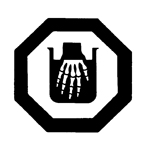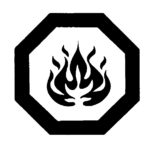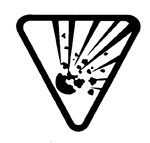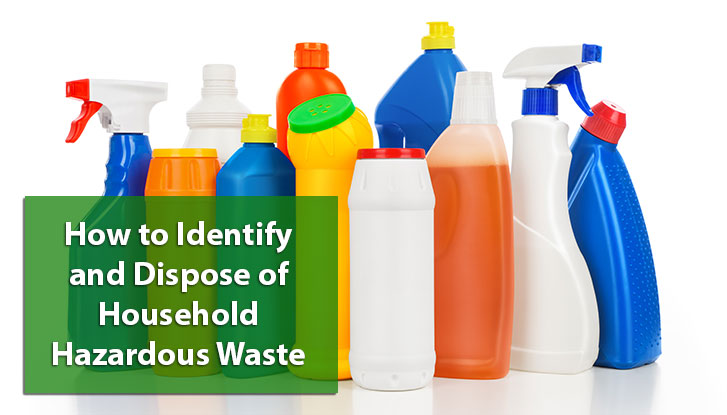There are a dizzying number of materials in the average home that are considered household hazardous waste. These materials can be dangerous to us or the environment when not stored or disposed of properly and include risks from fire, chemical reactions, explosions or poisoning.
Some of this waste may only be dangerous in large quantities but it’s still considered hazardous regardless of the amount. The Canadian Environmental Protection Act (CEPA) defines what is considered to be hazardous waste here.
It’s reassuring to know that the programs for recycling and safe disposal of these materials are more accessible and better than ever before. Toronto’s Community Environment Days, for example, succeeded in collecting roughly 340,000 kg of household hazardous waste in 2015 alone, and are definitely a step in the right direction.
Improper Disposal
Unfortunately, the safe disposal of hazardous substances is not as widespread as it could be. Hazardous liquids, for instance, should never be poured into the sewer, down the drain, on the ground or thrown out in the regular garbage.
Disposing of this type of waste in these ways can harm sanitation workers, contaminate septic tanks or wastewater treatment systems. If this type of waste ends up in a landfill, moisture and water passing through it can collect metals, chemicals and other toxic materials. This can leak out of the landfill and contaminate ground and surface water.
Identification
All hazardous waste should be kept in their original containers, if possible. Labels should never be removed because they not only list any harmful ingredients, but also display easily recognizable symbols indicating the dangers associated with the product.
Here are the most common symbols of items in your home that easily identify them as hazardous waste, along with examples of each.

Toxic/Poison
These are the items you lock away in high cabinets so your kids & pets can’t get a hold of them. They contain substances that are poisonous to humans and animals. They include: pesticides, fertilizers, solvents, batteries, antifreeze, medications, radiator coolants, preservatives & compact fluorescent light bulbs.

Corrosive
When you need something removed from various surfaces, these types of cleaners are your go-to products. Unfortunately they’re not picky about what they remove, including the skin of people or pets. Corrosive products include bleach and household cleaners, drain cleaners, oven cleaners, rust removers, laundry stain removers, and the liquid from lead-acid car batteries.

Flammable
Fire! These materials are hazardous for obvious reasons. Probably the most recognizable of the warning symbols, this one can be found on gasoline, fuel oil, motor oil, paint thinners, kerosene, camping fuel, furniture cleaners, lighter fluids, contact cement, oil-based paints, insect repellent and certain types of aerosol containers.

Reactive/Explosive
Kaboom! Cylinders meant to store gas such as propane or butane, as well as aerosol cans, will have this symbol on it. Batteries can also explode (Note 7, anyone?) and should be recycled properly. The risk of explosions are the reason we don’t accept cylinders in our garbage bin rentals. We wouldn’t want little bits of your ancient sofa scattered all over the highway, and that’s the best case scenario.
In addition to these items, other type of waste you should look out for and dispose of properly are medications, cooking oil (never pour it down the drain!) and syringes & needles. Remember also that even empty containers of any of these dangerous substances can pose a risk because of the residue inside them.
Safe Disposal & Recycling
So now that you’re familiar with household hazardous waste, what do you do with it? Luckily, there are numerous waste management programs in place all over Canada through which you can safely dispose of or recycle your hazardous waste. If you live in Toronto, the list below will be enough to get you started. Most of these programs are also available nationwide.
- Batteries, cooking oil, paint, propane tanks, syringes, household cleaners, pesticides, and other items can be dropped off at Toronto’s drop-off depots. Other municipalities also probably have drop off depots available. Check your municipality’s website for locations near you.
- Call2Recycle has many drop-off locations where you can bring your batteries for recycling.
- Check with your local pharmacy for a syringe / needle drop-off program.
- Schedule a free pick-up of your household hazardous waste by a Toronto Toxic Taxi (catchy isn’t it?) by calling 311 or booking an appointment online.
- Look up the next Community Environment Day and bring your waste there.
- Locate your nearest Orange Drop if you’re disposing of batteries, cylinders, antifreeze, oil containers or oil filters. This program is fully funded by the businesses that manufacture these products.
- Locate your nearest Regeneration collection site for paint, lighting products, pesticides, solvent & fertilizer recycling. And that’s not all; they also accept major appliances and power tools. Check their site for more details.
Reducing Household Hazardous Waste
Safe disposal and recycling are just the start. The better solution to the problem of hazardous waste is to consider making a switch to natural ingredients for common household needs so you’re not using dangerous substances at all.
There are many eco-friendly soaps and cleaners available on the market today that you can use as an alternative to traditional chemical-based products. And if you’d like to save money while you’re saving the environment, you can even make an alternative yourself.
A quick search of the internet will give you hundreds of do-it-yourself alternatives for common household needs. Here are some to get you started:
- Drain Cleaner: A plumber’s snake works great to unclog your drain.
- Glass Cleaner: A tablespoon of vinegar in 3 litres of water is an effective cleaning agent for glass and non-stone counter tops.
- Rug Deodorizer: Baking soda, your faithful refrigerator deodorizer, works everywhere. Sprinkle a generous amount on your carpets and vacuum after 15 minutes.
- Silver Polish: Boil one litre of water with one tablespoon of baking soda and a piece of aluminum foil. Drop your silver or silverware and boil for a couple of minutes. Remove it from the water and wipe away the tarnish!
- Disinfectant: Our eco-friendly friend vinegar is here to the rescue again, and can kill roughly 80 percent of germs. Try using pickling vinegar (7 percent concentration) for more germ-killing power.
Follow us on Facebook or Twitter for more tips, news and updates!
Learn more about City Waste Services



